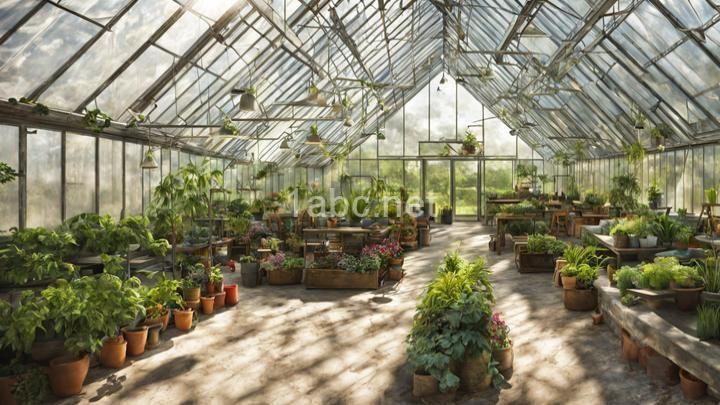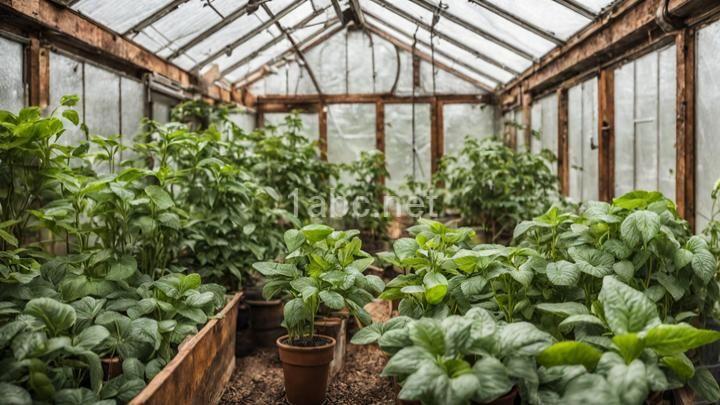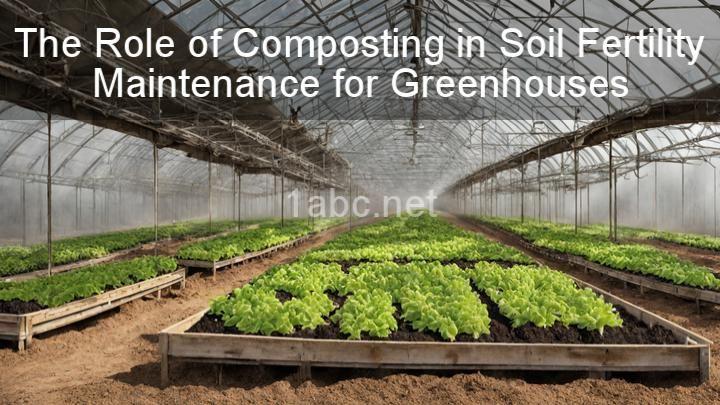Greenhouse Placement 101: Finding the Ideal Balance of Light and Shade
Introduction:
I. Understanding the Role of Light in Greenhouse Gardening
1. Direction:
2. Obstructions:
3. Seasonal Variations:
II. Balancing Light with Shade
1. Natural Shade Options:
2. Artificial Shade Options:
III. Evaluating Your Greenhouse Placement Options
IV. Troubleshooting Common Greenhouse Placement Challenges
Conclusion:

Introduction:
Welcome to our blog post on greenhouse placement! Whether you're a seasoned gardener or just starting out, understanding greenhouse placement is crucial for successful plant growth. In this guide, we'll explore the importance of finding the right balance of light and shade in your greenhouse.
I. Understanding the Role of Light in Greenhouse Gardening
A. The Importance of Light:
Light plays a vital role in greenhouse gardening as it affects photosynthesis and plant growth. When plants receive adequate sunlight exposure, they can convert carbon dioxide and water into glucose and oxygen through the process of photosynthesis. This glucose serves as their food source, enabling them to grow and thrive.
B. Factors to Consider for Optimal Light Exposure:
1. Direction:
The direction in which your greenhouse faces is essential for maximizing sunlight exposure throughout the day. The ideal direction for a greenhouse is south-facing, as it allows for the maximum amount of sunlight throughout the day. North-facing greenhouses receive the least amount of sunlight, while east and west-facing greenhouses receive a mix of morning and afternoon sunlight.
2. Obstructions:
It's important to identify potential obstructions that may block sunlight from reaching your greenhouse. Nearby trees, buildings, or even fences can cast shadows and reduce the amount of sunlight the plants receive. To overcome this, consider trimming trees or planting shade-tolerant vegetation strategically around the greenhouse to minimize shade.
3. Seasonal Variations:
Seasonal changes affect light intensity and duration. During the winter months, the angle of the sun is lower, resulting in less direct sunlight. Conversely, summer months bring longer days and higher sun angles. It's crucial to adjust your greenhouse's shading and orientation based on these seasonal variations to maintain optimal light levels.
II. Balancing Light with Shade
A. The Need for Shade:
While sunlight is crucial for plant growth, too much direct sunlight can have detrimental effects on plants. Excessive heat can cause sunburn, wilting, and even death in some cases. It's important to provide shade to protect your plants from these issues.
B. Choosing the Right Shade Solutions:
1. Natural Shade Options:
One of the most common ways to provide shade in a greenhouse is by using shade cloth or netting. These materials can be easily installed and removed as needed to regulate light intensity. When selecting a shade cloth, consider the percentage of shade required by your specific plants. Different plants have different shade tolerance levels, so it's essential to match the shading percentage with their needs.
2. Artificial Shade Options:
In cases where natural shading isn't sufficient, consider using artificial shading options such as blinds or curtains. These can be adjusted to control the amount of sunlight entering the greenhouse. For added convenience, automated shading systems are available, allowing you to program the desired shading levels based on time of day or season.
III. Evaluating Your Greenhouse Placement Options
A. Site Selection Considerations:
When choosing the location for your greenhouse, several factors need to be taken into account. Consider the proximity to water sources for irrigation, ease of access for maintenance, and any local regulations governing greenhouse placement. These factors will influence the overall functionality and success of your greenhouse.
B. Conducting a Sunlight Assessment:
Before finalizing your greenhouse placement, it's essential to assess the natural light levels in potential locations. Start by observing the path of the sun throughout the day. Note any areas of shade caused by nearby structures or trees. To get accurate measurements, you can also use tools like solar pathfinders or light meters to determine sunlight intensity. This assessment will help you make an informed decision about the best placement for your greenhouse.
IV. Troubleshooting Common Greenhouse Placement Challenges
A. Dealing with Insufficient Light:
In some cases, you may find that certain areas of your greenhouse receive insufficient natural light. To address this, consider using supplemental grow lights that emit the necessary spectrum of light for plant growth. These lights can be installed to provide additional light to specific areas or to supplement natural light during darker months.
B. Managing Excessive Heat and Glare:
Excessive heat and glare can be challenging to manage in a greenhouse. It's crucial to have proper ventilation in place to allow hot air to escape and cool air to enter. Additionally, shading strategies like using shade cloth or blinds will help reduce heat buildup. If needed, cooling systems such as fans or evaporative coolers can be installed to maintain optimal temperature levels.
Conclusion:
Finding the ideal balance between light and shade is essential for successful greenhouse gardening. By understanding the role of light, considering factors for optimal light exposure, balancing light with shade, evaluating greenhouse placement options, and troubleshooting common challenges, you'll be well-equipped to make informed decisions about your greenhouse placement. Remember, each plant has its specific requirements, so tailor your approach accordingly. With proper greenhouse placement, you'll create an optimal growing environment and set the stage for a thriving garden. Happy gardening!
FREQUENTLY ASKED QUESTIONS
What is the ideal placement for a greenhouse?
When considering the ideal placement for a greenhouse, there are a few key factors to keep in mind. Firstly, it is important to choose a location that receives ample sunlight throughout the day. Ideally, the greenhouse should be placed in an area that receives full sun exposure for at least six hours a day. This will ensure that your plants receive the necessary amount of light for healthy growth.Additionally, it is important to consider the surrounding environment. Avoid placing the greenhouse in low-lying areas where cold air may accumulate, as this can lead to frost damage. Instead, select a location that is well-drained and offers good air circulation. This will help prevent the buildup of humidity and reduce the risk of diseases in your plants.
Furthermore, consider the convenience of access when choosing the placement of your greenhouse. You'll want to have easy access to water, electricity, and other resources that may be needed for maintaining the greenhouse.
Lastly, it's worth considering any local regulations or restrictions that may affect the placement of your greenhouse. Some areas may have zoning laws or building codes that dictate where you can place a greenhouse. Be sure to check with your local authorities to ensure compliance.
In summary, the ideal placement for a greenhouse is a sunny location with good air circulation, well-drained soil, and easy access to resources. Taking these factors into consideration will create an optimal environment for your plants to thrive.
How much sunlight does a greenhouse need?
A greenhouse typically requires a sufficient amount of sunlight to ensure healthy plant growth. The amount of sunlight needed can vary depending on the specific plants being grown and the time of year. On average, most greenhouse plants require about six hours of direct sunlight per day. However, some plants may require more or less sunlight depending on their specific needs.It is important to note that not all sunlight needs to be direct. Diffused sunlight, which is sunlight that has been scattered or filtered through clouds or greenhouse coverings, can still provide adequate light for plant growth. In fact, diffused sunlight is often preferred by certain plants as it reduces the risk of sunburn and overheating.
To determine the amount of sunlight your greenhouse receives, it is recommended to monitor the light levels throughout the day using a light meter or by observing the position and intensity of the sunlight. This will help you make adjustments as needed, such as using shade cloth or adjusting the greenhouse orientation to optimize the amount of sunlight reaching your plants.
Remember that while sunlight is essential for plant growth, excessive heat and direct sunlight can also be harmful. It is important to strike a balance by providing shade and ventilation when necessary, especially during hot summer months.
Overall, understanding the sunlight requirements of your plants and actively monitoring the light levels in your greenhouse will help ensure optimal growing conditions and successful plant cultivation.
Can I place my greenhouse under a tree?
Yes, you can place your greenhouse under a tree. However, there are a few factors to consider before making this decision. Firstly, you need to assess the amount of sunlight your greenhouse will receive. Trees can create shade, which may limit the amount of sunlight your plants receive. Different plants have different sunlight requirements, so it's important to choose plants that are suitable for the amount of shade provided by the tree.
Secondly, you should consider the tree's root system. Some trees have extensive root systems that can compete with your greenhouse plants for water and nutrients. This could potentially hinder the growth of your plants. It's advisable to choose a tree with a less aggressive root system, or consider planting your greenhouse on a raised platform to prevent root interference.
Lastly, keep in mind that trees can drop leaves, branches, and other debris, which may cause maintenance issues for your greenhouse. Regular cleaning and maintenance will be necessary to keep your greenhouse clean and functioning optimally.
In summary, while it is possible to place your greenhouse under a tree, it is important to consider the sunlight, root system, and maintenance factors before making a decision.
How can I create shade in my greenhouse?
To create shade in your greenhouse, there are several options you can consider. Here are a few techniques you can use:
-
Shade Cloth: One of the most popular and effective methods is using shade cloth. This is a woven material specifically designed to block out a certain percentage of sunlight. It is available in various densities, allowing you to choose the level of shade you desire. Simply hang the shade cloth over the greenhouse structure, ensuring it covers the roof and sides.
-
Paint or Shade Paint: Another option is to apply a shade paint or shade liquid to the greenhouse glazing. These products work by reducing the amount of light and heat that enters the greenhouse. They can be easily applied using a paint roller or sprayer and are available in different shades to achieve the desired level of shading.
-
Shade Netting: Similar to shade cloth, shade netting is a lightweight and flexible material that can be attached to the greenhouse structure. It comes in different densities and colors, allowing you to control the amount of shade. Shade netting is easy to install and can be removed when not needed.
-
Adjustable Shade Systems: If you prefer a more versatile option, consider installing adjustable shade systems. These systems consist of retractable shade screens or panels that can be adjusted to regulate the amount of sunlight entering the greenhouse. They provide flexibility in managing shade throughout the day.
-
Planting Shade-Providing Vegetation: Another natural way to create shade is by planting shade-providing vegetation around the greenhouse. Trees, tall shrubs, or climbers can be strategically placed to block direct sunlight. However, keep in mind that these plants should not obstruct ventilation or crowd the greenhouse space.
Remember, the amount of shade you need will depend on the type of plants you are growing and their specific light requirements. It's also essential to monitor the temperature and humidity inside the greenhouse to ensure optimal growing conditions.

